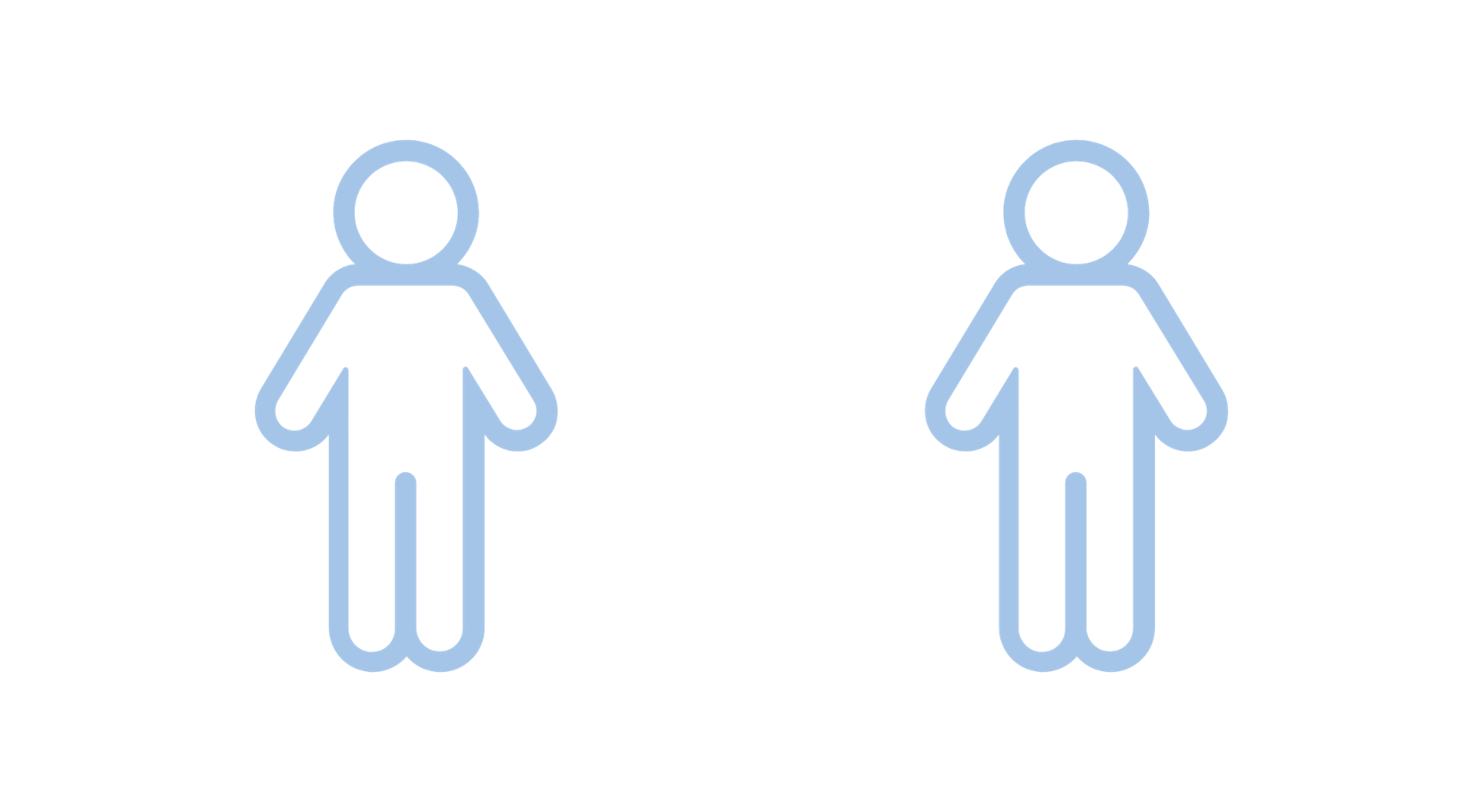.svg)

Digital signature is used


*Note: Notaries have two sets of Private/Public Keys (PEM keys and Blockchain keys)

%2C%20then%20again%20with%20t.png)


1
Unpack the Verifiable Package using the document's De-centralized Identifier address to collect the JWT payload and the Signer's Public Key.
OUTPUT
Public Keys: did:ethr:0x6efedeaec20e79071251fffa655F1bdDCa65c027#owner
JWT Payload: eyJ0eXAiOiJKV1QiLCJhbGciOiJFUzI1NkstUiJ9.eyJpYXQiOjE1ODc2NzE2MjUsInN1YiI6ImRpZDpldGhyOjB4NmVmZWRlYWVjMjBlNzkwNzEyNTFmZmZhNjU1RjFiZERDYTY1YzAyNyIsIm5iZiI6MTU4NzY3MTYyNCwidmMiOnsiQGNvbnRleHQiOlsiaHR0cHM6Ly93d3cudzMub3JnLzIwMTgvY3JlZGVudGlhbHMvdjEiLCJodHRwczovL3d3dy53My5vcmcvMjAxOC9jcmVkZW50aWFscy9leGFtcGxlcy92MSJdLCJpZCI6Imh0dHA6Ly9leGFtcGxlLmdvdi9jcmVkZW50aWFscy8zNzMyIiwidHlwZSI6WyJWZXJpZmlhYmxlQ3JlZGVudGlhbCIsIlRleGFzTm90YXJ5Q3JlZGVudGlhbCJdLCJpc3N1ZXIiOnsiaWQiOiJkaWQ6ZXRocjoweDJhNkYxRDUwODNmYjE5YjlmMkM2NTNCNTk4YWJDYjU3MDVlRDA0MzkiLCJuYW1lIjoiQmlsbHlDYXNld29ya2VyIiwibm90YXJ5SWQiOiIzNDc4OTIifSwiaXNzdWFuY2VEYXRlIjoxNTg3NjcxNjI0MjA0LCJleHBpcmF0aW9uRGF0ZSI6IjIwMjEtMDQtMDRUMDA6MDA6MDAuMDAwWiIsImNyZWRlbnRpYWxTdWJqZWN0Ijp7ImlkIjoiZGlkOmV0aHI6MHg2ZWZlZGVhZWMyMGU3OTA3MTI1MWZmZmE2NTVGMWJkRENhNjVjMDI3IiwiVGV4YXNOb3RhcnkiOnsiaWQiOiJkaWQ6ZXRocjoweDI3ZEZDNTQxNGFhNkNhMTUxNTQxMTM5MjU4MWU3MWFmMkVmMEI5MjEiLCJ0eXBlIjoiY2VydGlmaWVkQ29weSIsIm5hbWUiOiJQYXNzcG9ydCIsImRvY3VtZW50SGFzaCI6Ijk4OGU2NDZlODM0YjVlOWNiYzkyNzIyZDkwN2I1ODMzIiwiaGFzaFR5cGUiOiJNRDUifX0sImNyZWRlbnRpYWxTdGF0dXMiOnsiaWQiOiJodHRwczovL2V4YW1wbGUuZWR1L3N0YXR1cy8yNCIsInR5cGUiOiJDcmVkZW50aWFsU3RhdHVzTGlzdDIwMjAifSwiY3JlZGVudGlhbFNjaGVtYSI6eyJpZCI6Imh0dHBzOi8vZm9yZXZlcmJveC5jb20vdGV4YXNub3RhcnR5Lmpzb24iLCJ0eXBlIjoiSnNvblNjaGVtYVZhbGlkYXRvcjIwMjAifX0sImlzcyI6ImRpZDpldGhyOjB4MmE2RjFENTA4M2ZiMTliOWYyQzY1M0I1OThhYkNiNTcwNWVEMDQzOSJ9.h2TuBuhTk4ORjizyveWInkD8bYHY6QHQ9_9mJYqWSrwlSHjdi4KhDifHtOjvjZcKkQQpfSOsYW5EMiGMoRFO3wE
Public Keys: did:ethr:0x6efedeaec20e79071251fffa655F1bdDCa65c027#owner
JWT Payload: eyJ0eXAiOiJKV1QiLCJhbGciOiJFUzI1NkstUiJ9.eyJpYXQiOjE1ODc2NzE2MjUsInN1YiI6ImRpZDpldGhyOjB4NmVmZWRlYWVjMjBlNzkwNzEyNTFmZmZhNjU1RjFiZERDYTY1YzAyNyIsIm5iZiI6MTU4NzY3MTYyNCwidmMiOnsiQGNvbnRleHQiOlsiaHR0cHM6Ly93d3cudzMub3JnLzIwMTgvY3JlZGVudGlhbHMvdjEiLCJodHRwczovL3d3dy53My5vcmcvMjAxOC9jcmVkZW50aWFscy9leGFtcGxlcy92MSJdLCJpZCI6Imh0dHA6Ly9leGFtcGxlLmdvdi9jcmVkZW50aWFscy8zNzMyIiwidHlwZSI6WyJWZXJpZmlhYmxlQ3JlZGVudGlhbCIsIlRleGFzTm90YXJ5Q3JlZGVudGlhbCJdLCJpc3N1ZXIiOnsiaWQiOiJkaWQ6ZXRocjoweDJhNkYxRDUwODNmYjE5YjlmMkM2NTNCNTk4YWJDYjU3MDVlRDA0MzkiLCJuYW1lIjoiQmlsbHlDYXNld29ya2VyIiwibm90YXJ5SWQiOiIzNDc4OTIifSwiaXNzdWFuY2VEYXRlIjoxNTg3NjcxNjI0MjA0LCJleHBpcmF0aW9uRGF0ZSI6IjIwMjEtMDQtMDRUMDA6MDA6MDAuMDAwWiIsImNyZWRlbnRpYWxTdWJqZWN0Ijp7ImlkIjoiZGlkOmV0aHI6MHg2ZWZlZGVhZWMyMGU3OTA3MTI1MWZmZmE2NTVGMWJkRENhNjVjMDI3IiwiVGV4YXNOb3RhcnkiOnsiaWQiOiJkaWQ6ZXRocjoweDI3ZEZDNTQxNGFhNkNhMTUxNTQxMTM5MjU4MWU3MWFmMkVmMEI5MjEiLCJ0eXBlIjoiY2VydGlmaWVkQ29weSIsIm5hbWUiOiJQYXNzcG9ydCIsImRvY3VtZW50SGFzaCI6Ijk4OGU2NDZlODM0YjVlOWNiYzkyNzIyZDkwN2I1ODMzIiwiaGFzaFR5cGUiOiJNRDUifX0sImNyZWRlbnRpYWxTdGF0dXMiOnsiaWQiOiJodHRwczovL2V4YW1wbGUuZWR1L3N0YXR1cy8yNCIsInR5cGUiOiJDcmVkZW50aWFsU3RhdHVzTGlzdDIwMjAifSwiY3JlZGVudGlhbFNjaGVtYSI6eyJpZCI6Imh0dHBzOi8vZm9yZXZlcmJveC5jb20vdGV4YXNub3RhcnR5Lmpzb24iLCJ0eXBlIjoiSnNvblNjaGVtYVZhbGlkYXRvcjIwMjAifX0sImlzcyI6ImRpZDpldGhyOjB4MmE2RjFENTA4M2ZiMTliOWYyQzY1M0I1OThhYkNiNTcwNWVEMDQzOSJ9.h2TuBuhTk4ORjizyveWInkD8bYHY6QHQ9_9mJYqWSrwlSHjdi4KhDifHtOjvjZcKkQQpfSOsYW5EMiGMoRFO3wE
Try it yourself: https://uniresolver.io/
2
The JWT is then decoded to obtain VC (Verifiable Credential) payload
INPUT
JWT Payload: eyJ0eXAiOiJKV1QiLCJhbGciOiJFUzI1NkstUiJ9.eyJpYXQiOjE1ODc2NzE2MjUsInN1YiI6ImRpZDpldGhyOjB4NmVmZWRlYWVjMjBlNzkwNzEyNTFmZmZhNjU1RjFiZERDYTY1YzAyNyIsIm5iZiI6MTU4NzY3MTYyNCwidmMiOnsiQGNvbnRleHQiOlsiaHR0cHM6Ly93d3cudzMub3JnLzIwMTgvY3JlZGVudGlhbHMvdjEiLCJodHRwczovL3d3dy53My5vcmcvMjAxOC9jcmVkZW50aWFscy9leGFtcGxlcy92MSJdLCJpZCI6Imh0dHA6Ly9leGFtcGxlLmdvdi9jcmVkZW50aWFscy8zNzMyIiwidHlwZSI6WyJWZXJpZmlhYmxlQ3JlZGVudGlhbCIsIlRleGFzTm90YXJ5Q3JlZGVudGlhbCJdLCJpc3N1ZXIiOnsiaWQiOiJkaWQ6ZXRocjoweDJhNkYxRDUwODNmYjE5YjlmMkM2NTNCNTk4YWJDYjU3MDVlRDA0MzkiLCJuYW1lIjoiQmlsbHlDYXNld29ya2VyIiwibm90YXJ5SWQiOiIzNDc4OTIifSwiaXNzdWFuY2VEYXRlIjoxNTg3NjcxNjI0MjA0LCJleHBpcmF0aW9uRGF0ZSI6IjIwMjEtMDQtMDRUMDA6MDA6MDAuMDAwWiIsImNyZWRlbnRpYWxTdWJqZWN0Ijp7ImlkIjoiZGlkOmV0aHI6MHg2ZWZlZGVhZWMyMGU3OTA3MTI1MWZmZmE2NTVGMWJkRENhNjVjMDI3IiwiVGV4YXNOb3RhcnkiOnsiaWQiOiJkaWQ6ZXRocjoweDI3ZEZDNTQxNGFhNkNhMTUxNTQxMTM5MjU4MWU3MWFmMkVmMEI5MjEiLCJ0eXBlIjoiY2VydGlmaWVkQ29weSIsIm5hbWUiOiJQYXNzcG9ydCIsImRvY3VtZW50SGFzaCI6Ijk4OGU2NDZlODM0YjVlOWNiYzkyNzIyZDkwN2I1ODMzIiwiaGFzaFR5cGUiOiJNRDUifX0sImNyZWRlbnRpYWxTdGF0dXMiOnsiaWQiOiJodHRwczovL2V4YW1wbGUuZWR1L3N0YXR1cy8yNCIsInR5cGUiOiJDcmVkZW50aWFsU3RhdHVzTGlzdDIwMjAifSwiY3JlZGVudGlhbFNjaGVtYSI6eyJpZCI6Imh0dHBzOi8vZm9yZXZlcmJveC5jb20vdGV4YXNub3RhcnR5Lmpzb24iLCJ0eXBlIjoiSnNvblNjaGVtYVZhbGlkYXRvcjIwMjAifX0sImlzcyI6ImRpZDpldGhyOjB4MmE2RjFENTA4M2ZiMTliOWYyQzY1M0I1OThhYkNiNTcwNWVEMDQzOSJ9.h2TuBuhTk4ORjizyveWInkD8bYHY6QHQ9_9mJYqWSrwlSHjdi4KhDifHtOjvjZcKkQQpfSOsYW5EMiGMoRFO3wE
JWT Payload: eyJ0eXAiOiJKV1QiLCJhbGciOiJFUzI1NkstUiJ9.eyJpYXQiOjE1ODc2NzE2MjUsInN1YiI6ImRpZDpldGhyOjB4NmVmZWRlYWVjMjBlNzkwNzEyNTFmZmZhNjU1RjFiZERDYTY1YzAyNyIsIm5iZiI6MTU4NzY3MTYyNCwidmMiOnsiQGNvbnRleHQiOlsiaHR0cHM6Ly93d3cudzMub3JnLzIwMTgvY3JlZGVudGlhbHMvdjEiLCJodHRwczovL3d3dy53My5vcmcvMjAxOC9jcmVkZW50aWFscy9leGFtcGxlcy92MSJdLCJpZCI6Imh0dHA6Ly9leGFtcGxlLmdvdi9jcmVkZW50aWFscy8zNzMyIiwidHlwZSI6WyJWZXJpZmlhYmxlQ3JlZGVudGlhbCIsIlRleGFzTm90YXJ5Q3JlZGVudGlhbCJdLCJpc3N1ZXIiOnsiaWQiOiJkaWQ6ZXRocjoweDJhNkYxRDUwODNmYjE5YjlmMkM2NTNCNTk4YWJDYjU3MDVlRDA0MzkiLCJuYW1lIjoiQmlsbHlDYXNld29ya2VyIiwibm90YXJ5SWQiOiIzNDc4OTIifSwiaXNzdWFuY2VEYXRlIjoxNTg3NjcxNjI0MjA0LCJleHBpcmF0aW9uRGF0ZSI6IjIwMjEtMDQtMDRUMDA6MDA6MDAuMDAwWiIsImNyZWRlbnRpYWxTdWJqZWN0Ijp7ImlkIjoiZGlkOmV0aHI6MHg2ZWZlZGVhZWMyMGU3OTA3MTI1MWZmZmE2NTVGMWJkRENhNjVjMDI3IiwiVGV4YXNOb3RhcnkiOnsiaWQiOiJkaWQ6ZXRocjoweDI3ZEZDNTQxNGFhNkNhMTUxNTQxMTM5MjU4MWU3MWFmMkVmMEI5MjEiLCJ0eXBlIjoiY2VydGlmaWVkQ29weSIsIm5hbWUiOiJQYXNzcG9ydCIsImRvY3VtZW50SGFzaCI6Ijk4OGU2NDZlODM0YjVlOWNiYzkyNzIyZDkwN2I1ODMzIiwiaGFzaFR5cGUiOiJNRDUifX0sImNyZWRlbnRpYWxTdGF0dXMiOnsiaWQiOiJodHRwczovL2V4YW1wbGUuZWR1L3N0YXR1cy8yNCIsInR5cGUiOiJDcmVkZW50aWFsU3RhdHVzTGlzdDIwMjAifSwiY3JlZGVudGlhbFNjaGVtYSI6eyJpZCI6Imh0dHBzOi8vZm9yZXZlcmJveC5jb20vdGV4YXNub3RhcnR5Lmpzb24iLCJ0eXBlIjoiSnNvblNjaGVtYVZhbGlkYXRvcjIwMjAifX0sImlzcyI6ImRpZDpldGhyOjB4MmE2RjFENTA4M2ZiMTliOWYyQzY1M0I1OThhYkNiNTcwNWVEMDQzOSJ9.h2TuBuhTk4ORjizyveWInkD8bYHY6QHQ9_9mJYqWSrwlSHjdi4KhDifHtOjvjZcKkQQpfSOsYW5EMiGMoRFO3wE
OUTPUT
VC Payload:
{
"iat": 1587671625,
"sub":
"did:ethr:0x6efedeaec20e79071251fffa655F1bdDCa65c027",
"nbf": 1587671624,
"vc": {
"@context": [
"https://www.w3.org/2018/credentials/v1",
"https://www.w3.org/2018/credentials/examples/v1"
],
"id": "http://example.gov/credentials/3732",
"type": [
"VerifiableCredential",
"TexasNotaryCredential"
],
"issuer": {
"id":
"did:ethr:0x2a6F1D5083fb19b9f2C653B598abCb5705eD0439",
"name": "BillyCaseworker",
"notaryId": "347892"
},
"issuanceDate": 1587671624204,
"expirationDate": "2021-04-04T00:00:00.000Z",
"credentialSubject": {
"id":
"did:ethr:0x6efedeaec20e79071251fffa655F1bdDCa65c027",
"TexasNotary": {
"id":
"did:ethr:0x27dFC5414aa6Ca1515411392581e71af2Ef0B921",
"type": "certifiedCopy",
"name": "Passport",
"documentHash":
"988e646e834b5e9cbc92722d907b5833",
"hashType": "MD5"
}
},
"credentialStatus": {
"id": "https://example.edu/status/24",
"type": "CredentialStatusList2020"
},
"credentialSchema": {
"id": "https://foreverbox.com/texasnotarty.json",
"type": "JsonSchemaValidator2020"
}
},
"iss":
"did:ethr:0x2a6F1D5083fb19b9f2C653B598abCb5705eD0439"
}
VC Payload:
{
"iat": 1587671625,
"sub":
"did:ethr:0x6efedeaec20e79071251fffa655F1bdDCa65c027",
"nbf": 1587671624,
"vc": {
"@context": [
"https://www.w3.org/2018/credentials/v1",
"https://www.w3.org/2018/credentials/examples/v1"
],
"id": "http://example.gov/credentials/3732",
"type": [
"VerifiableCredential",
"TexasNotaryCredential"
],
"issuer": {
"id":
"did:ethr:0x2a6F1D5083fb19b9f2C653B598abCb5705eD0439",
"name": "BillyCaseworker",
"notaryId": "347892"
},
"issuanceDate": 1587671624204,
"expirationDate": "2021-04-04T00:00:00.000Z",
"credentialSubject": {
"id":
"did:ethr:0x6efedeaec20e79071251fffa655F1bdDCa65c027",
"TexasNotary": {
"id":
"did:ethr:0x27dFC5414aa6Ca1515411392581e71af2Ef0B921",
"type": "certifiedCopy",
"name": "Passport",
"documentHash":
"988e646e834b5e9cbc92722d907b5833",
"hashType": "MD5"
}
},
"credentialStatus": {
"id": "https://example.edu/status/24",
"type": "CredentialStatusList2020"
},
"credentialSchema": {
"id": "https://foreverbox.com/texasnotarty.json",
"type": "JsonSchemaValidator2020"
}
},
"iss":
"did:ethr:0x2a6F1D5083fb19b9f2C653B598abCb5705eD0439"
}
Try it yourself: https://jwt.io/
3
Notary PEM public key is retrieved from the VC payload shown above. This public key is then used to decrypt the hash string also found in the VC to yield a decrypted hash string.

Easy to use
Enter the document's DID Address, upload the digitally notarized filed and verify any document in seconds.
Easy to understand
Built-in infographics help explain the cryptographic process of how this document was digitally notarized.
Easy to audit
Steps are broken down by code, offering full transparency as to how the document is processed and verified.
















.svg)






































%20%E2%80%93%203.png)
%20%E2%80%93%204.png)
%20%E2%80%93%203.png)
%20%E2%80%93%2011.png)
%20%E2%80%93%205.png)
%20%E2%80%93%2024%402x.png)














